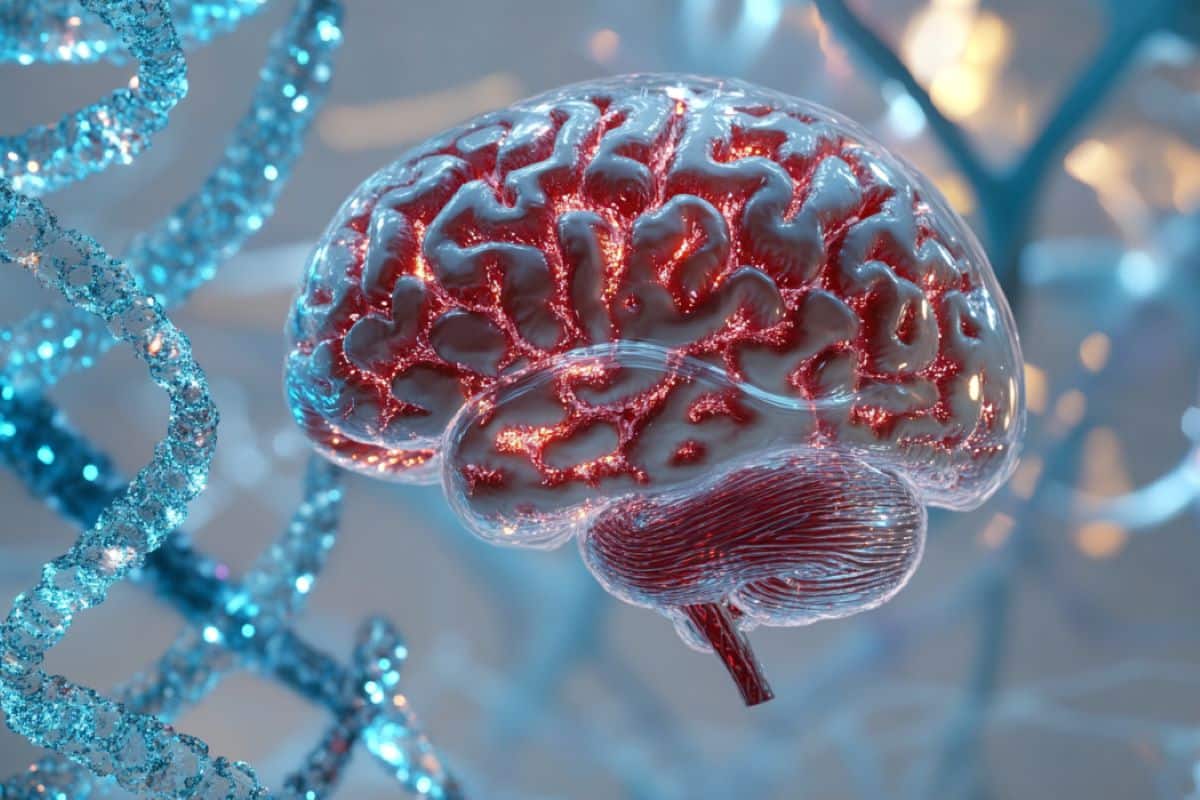Salt-related protein increases linked to multiple sclerosis

Summary: Researchers have found that increased levels of the protein PRDM1-S, triggered by high salt intake, disrupt immune regulation and contribute to autoimmune diseases such as multiple sclerosis (MS).
This discovery reveals how environmental factors, such as diet, can influence genetic mechanisms, leading to T cell dysfunction. The results suggest that targeting PRDM1-S could lead to new treatments for a range of autoimmune diseases.
Key facts:
- Increased PRDM1-S expression disrupts immune regulation, contributing to MS and other autoimmune diseases.
- High salt intake induces overexpression of PRDM1-S, leading to dysfunction of regulatory T cells.
- Researchers are developing drugs to decrease PRDM1-S expression as a potential universal treatment for autoimmune diseases.
Source: Yale University
More than two decades ago, a research team in the lab of David Hafler, a researcher at Yale and Harvard at the time, discovered a type of T cell in humans that weakens the immune system. They later discovered that these so-called regulatory T cells, when defective, are an underlying cause of autoimmune diseases, particularly multiple sclerosis (MS). However, for many years, the mechanism behind this dysfunction remained unclear.
In a new Yale-led study, a team of researchers finds that this loss of immune regulation is triggered by an increase in PRDM1-S, a protein involved in immune function, triggering a dynamic interplay of multiple genetic and environmental factors, including high salt intake.

The results, published in the journal Scientific translational medicinealso reveal a new target for universal treatment of human autoimmune diseases.
The research was led by Tomokazu Sumida, assistant professor at Yale School of Medicine (YSM), and Hafler, the William S. and Lois Stiles Edgerly Professor of Neurology and professor of immunobiology at Yale.
“These experiments reveal a key underlying mechanism for the loss of immune regulation in MS and likely other autoimmune diseases,” said Hafler, who is also chairman of Yale’s department of neurology.
They also provide mechanistic insight into how Treg (regulatory T cell) dysfunction occurs in human autoimmune diseases.”
Autoimmune diseases, among the most common disorders in young adults, are known to be affected by genetic and environmental factors, including vitamin D and fatty acid deficiency.
In a previous study, Sumida and Hafler found that high salt levels also contribute to the development of multiple sclerosis, an autoimmune disease of the central nervous system. Specifically, they observed that high salt levels induced inflammation in a type of immune cell called CD4 T cells, while causing regulatory T cells to lose function. They found that this phenomenon is mediated by a salt-sensitive kinase, or enzyme essential for cell signaling, known as SGK-1.
For this new study, the researchers used RNA sequencing to compare gene expression in MS patients with healthy individuals. In MS patients, the researchers identified upregulation, or increased expression, of a gene called PRDM1-S (primate-specific transcription factor), also known as BLIMP-1, which is involved in regulating immune function.
The researchers found that PRDM1-S led to increased expression of the salt-sensitive enzyme SGK-1, which led to disruption of regulatory T cells. Additionally, they found similar overexpression of PRDM1-S in other autoimmune diseases, suggesting that it may be a common feature of regulatory T cell dysfunction.
“Based on this knowledge, we are now developing drugs that can target and decrease PRDM1-S expression in regulatory T cells,” Sumida said.
“We have also initiated collaborations with other Yale researchers using new computational methods to augment regulatory T cell function to develop new approaches that will work in human autoimmune diseases.”
The study was conducted with Bradley Bernstein and Manolis Kellis, Hafler’s longtime collaborators at the Broad Institute of MIT and Harvard, and several other research institutions.
Other authors from the Yale lab include neurologist Matthew R. Lincoln and postgraduate research assistants Alice Yi, Helen Stillwell and Greta Leissa.
About this Multiple Sclerosis Research News
Author: Bess Connolly
Source: Yale University
Contact: Bess Connolly – Yale
Picture: Image credited to Neuroscience News
Original research: Access closed.
“An autoimmune transcriptional circuit drives FOXP3+ “Regulatory T Cell Dysfunction” by David Hafler et al. Scientific translational medicine
Abstract
An autoimmune transcriptional circuit drives FOXP3+ regulatory T cell dysfunction
Autoimmune diseases, among the most common disorders in young adults, are mediated by genetic and environmental factors. Although CD4+FOXP3+ regulatory T cells (Tregulations) play a central role in preventing autoimmunity, the molecular mechanism underlying their dysfunction is unknown.
Here, we performed a comprehensive transcriptomic and epigenomic profiling of Tregulations in multiple sclerosis (MS), an autoimmune disease, to identify critical transcriptional programs regulating human autoimmunity.
We found that upregulation of a primate-specific short isoform of PR domain zinc finger protein 1 (PRDM1-S) induces expression of serum- and glucocorticoid-regulated kinase 1 (SGK1) independently of the evolutionarily conserved long isoform PRDM1which led to the destabilization of the P3 fork box (FOXP3) and Treg malfunction. This aberration PRDM1-S/SGK1 The axis is shared by other autoimmune diseases.
Furthermore, the profile of the chromatin landscape in Tregulations individuals with MS revealed enriched binding between activator protein-1 (AP-1) and interferon regulatory transcription factor (IRF) as potential upstream regulators of PRDM1-S expression and Treg dysfunction.
Our study reveals a mechanistic model where the evolutionary emergence of PRDM1-S and epigenetic priming of AP-1/IRF may be key factors in T dysfunctionregulations in autoimmune diseases.





